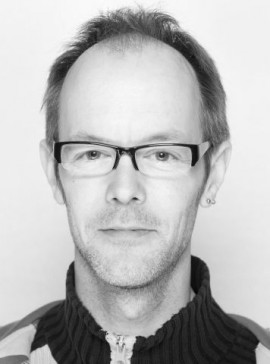
To come in close
Rohini Malik Okon on contemporary artists who invite their audience to get closer.
Rohini Malik Okon on contemporary artists who invite their audience to get closer.
Manick Govinda on the relationship between artist and society.
S Mark Gubb on the economic and ecological implications of artists’ practice.
‘Artists’ Books: Potent Spaces for unusual voices or vanity publishing for the favoured few?’ Presentation by Sara Wajid, first published in November 2005 on the Future forecast: Curated space online think-tank.
Evidence-based recommendations on: Identifying the ‘new practices’ model, Valuing peer networks, Redefining public accountability, Supporting location and community and New ‘brand image’ for artists.
New evidence exposing, quantifying and discussing the likely impact on the visual arts of Arts Council England’s decisions on fifteen previously Regularly Funded Organisations (RFOs) visual arts organisations unsuccessful in their NPO application. PDF file [200kbs]
New evidence exposing, quantifying and discussing the likely impact on the visual arts of Arts Council England’s decisions on fifteen previously Regularly Funded Organisations (RFOs) visual arts organisations unsuccessful in their NPO application. It shows that a disproportionate number of artists’ membership and development agencies and practice-based organisations lost core funding, despite ACE’s aim of creating a balanced national portfolio and makes recommendations for sustaining their work as part of a strengthened arts ecology.
When the economic recession hit, it impacted on everything. But how in particular did it affect the livelihoods of artists in terms of access to employment and career opportunities, and what is the longer-term impact? [PDF version 153 kb]
Explores the affect of the economic recession on the livelihoods of artists in terms of access to employment and career opportunities and raises concerns about how artists’ practice is likely to fare in this period of arts austerity. [HTML format]
Artist Pippa Koszerek considers recent student protests within the context of alternative art school strategies.
Martin Patrick on Robert Filliou and George Brecht’s collaborative shop project La Cédille qui sourit.
Robyn Minogue reports from the ‘For a New Europe: University Struggles Against Austerity’ conference in Paris that looked to discuss and organise a common network based on European -wide issues including autonomous knowledge production, self-education and networking.
Terry Smith discusses the Experimental Art School.
Department 21 is a school within a school where designers, artists and architects can meet, collaborate and share working space beyond the institutional boundaries of their own disciplines.
Elements MA is an unfolding proposition for a educational pathway based around a titular masters course. Initially the MA will manifest itself through a series of events, exhibitions and activities from its base at Trade, Nottingham.
Set up in 2008 for the New Dark Age exhibition, Free School is a non-hierarchical, collectivist, no-cost, peer-led art school.
The Hedgeschoolproject is a participatory work by Glenn Loughran that combines art, architecture and activism to explore forms of critical pedagogy and emancipatory learning.
The Islington Mill Art Academy was set up by students for students. It is an unaccredited, collectively run higher education experience.
Emerging from the self-organised culture of the Los Angeles art scene, The Public School is a peer-led education model.
Set up in 2006, the New International School’s peer-network of fifty members organise events, publications and collaborative works in Finland, France, Serbia, the Netherlands and the UK.
The Parallel School of Art engages in collaborative workshops and projects that explore and redefine models of learning.
Jens Sundheim is a visual artist working principally in photography. Born in Dortmund in 1970, he studied photography at the University of Applied Sciences and Arts, Dortmund from 1994 – 2002 with a period of study at the University of Plymouth in 1997. He is currently based in a live/work studio space at Künstlerhaus Dortmund (KHD) and has been resident there since 2007. Sundheim’s work has been exhibited internationally in exhibitions and festivals, most recently in ‘space shuttle 2.0’ at Fotogalerie, Vienna. He has had his work featured in various magazines and publications and has been awarded numerous prizes including a recommendation at the Japan Media Arts Festival, Tokyo Metropolitan Museum of Photography.
Katharina Gruzei is one of the artists in Linz to have been awarded a studio for one year at Salzamt Atelierhaus over 2009/2010. Born in Klagenfurt, Carinthia in 1983, she has been based in Linz at the University of Arts in Linz since 2004 and will finish her current studies with a postgraduate qualification this year. She also spent six months in 2006 studying at UCSB, Santa Barbara, California and a year in Berlin at the University of Fine Art. Although still studying, Gruzei is already represented by Charim Galerie, and has shown at both their galleries in Berlin and Vienna. Gruzei has exhibited widely, most recently at Anadoma Filmfestival, Charim Ungar Contemporary Berlin, in No Sound of Music at Salzburger Kunstverein and in a group exhibition of contemporary Austrian photography at the Museum of Modern Art, Carinthia. She has taken part in numerous workshops and has delivered a lecture at Stanford University.
Born in Pfarrkirchen, Bayern in Germany in 1982, Haidacher studied photography at The University of the Arts, Linz from 2006 to 2009. He is currently studying for his Masters there. Haidacher has also spent some time living in London (and has an impeccable English accent). Haidacher is one of the artists based in Linz to be awarded a studio at the Salzamt for one year during 2009/2010. He also won the Best Selected Works prize in the Epson Art Photo Award 2009.
Emily Speed looks at the complex nature of making a living as an artist with reference to profiles of four artists, all based in Austria and Germany, whom she worked alongside at the Salzamt, Linz.






















